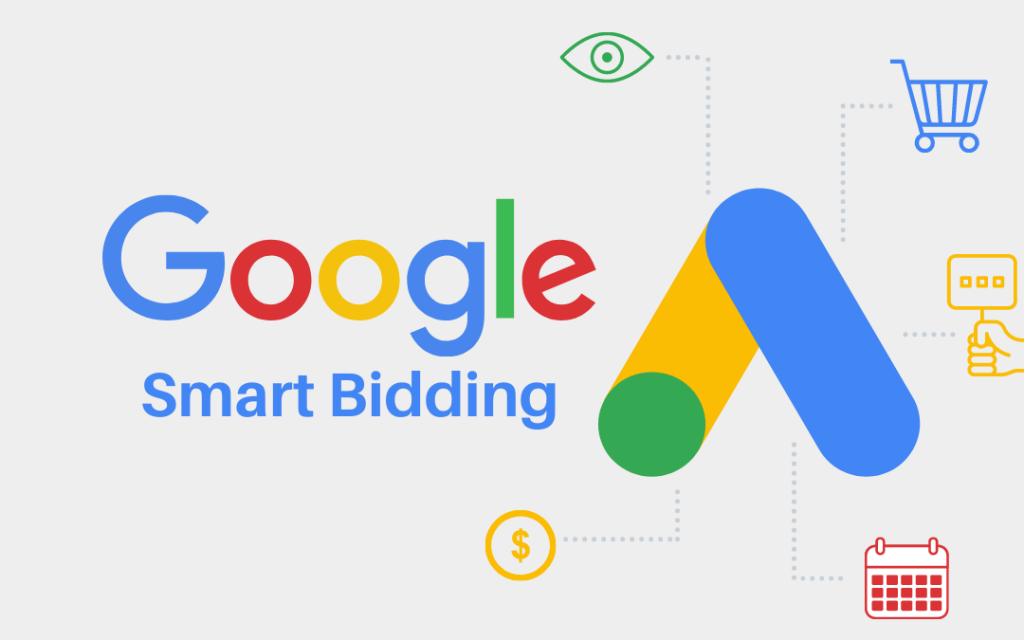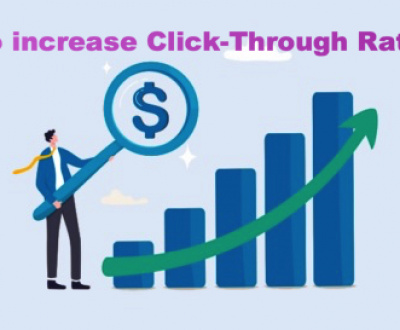Top 5 Ways Smart Bidding Improves PPC Campaign Quality
- April 10, 2021
- Google AdWords, PPC ads
Google Ads is growing in terms of intelligence. Its algorithms change pretty frequently. The use of machine learning and the subsequent introduction of Smart Bidding has made advertisers’ lives relatively easy.
With the introduction of intelligent bidding empowered by machine learning, the users can now bring better organization and planned thinking into campaign designing.
The results are not the outcome of the guesswork anymore. People have concrete reasoning in hand to justify the steps they take for designing the ad campaigns.
Previously, the advertisers found it challenging to keep pace with which changes occur since they have lots of things to figure out at once.
The task of changing advertising strategies ate a lot of their time; still, the quality of the campaign achieved did not come out as expected.
Let’s take a look at the advantages that smart bidding has brought along to make PPC advertising a well-planned activity.
Before we jump to the advantages, let us tell you why smart bidding has become a topic of discussion among advertisers of late. There are two essential reasons for this.
a. Smart bidding: Capable of providing you result-oriented PPC planning support.
Smart bidding eyes the ensuing campaign’s results by setting revenue targets based on Machine Learning’s findings on the one hand. And on the other, it also allows advertisers to choose the mix of bids to help them achieve the targets they want from the ad campaign.
b. Smart Bidding: A tailored to needs approach offered for planning campaigns
Allows covering just one campaign and the whole of the ad portfolio, leveraging Google Ads’ ML capabilities.
Targets’ choice, revenue generation from ad campaigns, and coverage flexibility have made businesses take smart bidding quite seriously.
Explained here are five targets the smart bidding offers to help advertisers achieve their promotional objectives.

1. Target Cost per Acquisition (TCPA)
Businesses need to ascertain the cost of acquisition to achieve profitable results within their advertising budget. Target cost per acquisition or target CPA means that the businesses decide at the start how much they plan to spend.
Previously, the stingy approach of businesses affected PPC campaign results adversely. The budget was too low to get the correct set of keywords, and also, the distribution of the budget on the keywords was not correctly planned. It led to a complete waste of budget.
TCPA facility provided in smart bidding firstly tells the advertisers whether the cost vs. revenue is feasible or not. Further, when the businesses choose a target cost, Smart bidding rolls out keywords to invest upon. The keyword list chosen is designed to enable the businesses to achieve their reach and revenue motives within the chosen cost limit.
2. Target Return on Ad Spend
Why anybody advertises? The ultimate aim is to improve figures or returns. Any business eyes the returns from any activity before investing in it; advertising is no exception either. Smart Bidding offers businesses the convenience of choosing target return on Ad spend.
Google’s smart bidding options accessible via Google Ads allows businesses to target the returns they want from every dollar spent on the advertising activity. For a $10 target revenue value, as against the $5 spent per click, the ROAS will be $10/$5*100 = 200%.
Now that you have got all figures in mind, Smart Bidding does its bit. It helps you ascertain:
a. Number of minimum conversions you will require to achieve the set ROAS.
b. Per bid cost required to achieve this return percentage
How ROAS targeting works
ROAS is derived primarily from historical data. For ROAS to work, the company should have a month-long data to present to Google for assessment. The Thumb rule says that 15 conversions in 30 days-period offer requisite data to ascertain conditions conducive to successful target ROAS bidding.
It is said that ROAS improves the company’s conversion rate by about 35%.
3. Click Maximization
As the name suggests, Click maximization means getting as many clicks as possible out of the daily budget limit set for advertising. It may not give the complete picture of the conversion rate directly. However, it tells about the reach and popularity of the ads among the people who click ads.
The success of click maximization depends on how and on whom you have targeted the ads. If the correct audience contributes to maximum clicks, it may positively impact terms of conversions.
The best purposes served by click maximization are:
a. Helps strengthen branding and get individual data that businesses can utilize for personalized sales and promotional communications.
b. Increase in traffic to the website gives one crucial resource, i.e., data to design campaigns in more user-centric ways in the future. This data also helps change advertising strategy, such as shifting focus between ROAS or CPA, as per the business’s changing objectives.
Hence, the click maximization strategy empowered by Smart Bidding allows businesses to create better awareness; at this stage, their focus is not on conversions. This phase corresponds to the nascent stage when the businesses are simply trying to build a rapport and not jumping straight away to scoring sales.
4. Target Impression Share
Not all advertising tactics are meant for increasing sales. Businesses do understand that conversion is a very intricate process and requires more focused efforts. They see advertising not as a conversion tool but as a tool for creating and increasing awareness among their target audience.
Hence, when advertising in the online space, the awareness is equal to the number of ad impressions. It means the number of clicks you get when the customers reach your page position after entering a keyword.
Based on user behavior, past data, and predictive modeling that ML provides to smart bidding, the businesses find out the most likely keywords to fetch them the desired impression share.
Smart bidding goes a step further from helping businesses meet the increase in impression share. It works towards improving the strategic position of the ads, which may be:
c. Top of the SERP
d. Near the top
e. Anywhere on the page
It is worth noticing that the page position will be directly linked to the advertising budget. Thus, smart bidding combines ROAS, CPA, and other cost implications with desired ad position to help plan advertising campaign with impression share in the focus.
5. Conversion Maximization
This smart bidding option is meant for businesses that design advertising campaigns keeping conversions in mind. In this case, the smart bidding algorithm offers the keyword mix based on the business’s conversion aims.
This approach’s use lies in selecting the ad placement positions derived from the information available in contextual hints and historical data.
The most significant advantage of this smart bidding strategy is that businesses can eye lots of conversions per campaign despite having a small acquisition budget. The algorithm considers only the number of conversions; it means businesses that go by the notion, ‘conversion at flexible cost’ can extract desired benefits from this smart bidding strategy.
In this smart bidding approach, the focus is never on acquisition costs. A cost structure is chosen first. With the help of machine learning, the algorithm rolls out those areas in search engine result pages where maximum conversions took place in the past.
It also analyzes user behavior to find lucrative positions for future campaigns. Thus, the businesses can plan their ad placement and cost planning a better way.
This strategy works on finding alternatives to top positions on the page only. It means there must be some other reason that compels people to click on an ad besides the position on the page. With data analytics, word-of-mouth or mouth publicity is an effective alternative to a lucrative position on the result page.
When does this strategy work?
The conversion maximization approach is designed for the businesses’ initial stages. Here, businesses aggressively collect the consumers’ views and reviews through feedback forms, online surveys, etc.
Machine learning encapsulates all the information collected from various sources into a proper channel. With the help of analytical abilities, businesses have strategies that don’t demand them to be at the top of the competition always.
In essence, more than competition-centric, the approach is customer-centric and smart bidding finds the trigger in customer response to roll out the keywords worth contending for.
The most significant advantage it offers is that of social presence. Any promotional campaign aims to achieve publicity and a place in the mind of consumers.
Since this strategy involves a lot of opinion collection or sharing the company’s facts, the businesses ride on the popularity earned among relevant circles. It helps them meet their success objectives with a well-directed approach, best-suited to their advertising budget.
Summing up,
Businesses always find it tricky to assign a budget according to the goals aimed. Both under-budgeting and over-budgeting hit the businesses’ chances of achieving better outcomes from the campaigns. Machine learning gives a clear-cut picture of the possible strategies that may ensure better outcomes. Thus, instead of trying permutation-combination of budget and goals, the businesses focus on the quality of ads to be served.
Media Challengers, led by Birendra Kumar, is the foremost SEO and PPC services company, specializing in implementing a comprehensive range of online marketing techniques to enhance business profitability. As a Google certified agency partner, we bring expertise in SEO (Search Engine Optimization) and PPC (Pay-Per-Click) strategies to drive successful digital campaigns.
Do you want an instant result and traffic?
You are at the right place, we are committed for instant result (Call, Query Form, Traffic, view, etc..) generation. If you have any questions please let me know.
Our last month campaign performance

Recent Posts
- How to set up Performance Max campaign? April 7, 2024
- The Importance of Keyword Research in Google Ads Campaigns February 25, 2024
- Maximizing ROI with Google Ads Budget Management 2024 December 21, 2023











